Operations
Research Vessel Falkor supports the following operations:
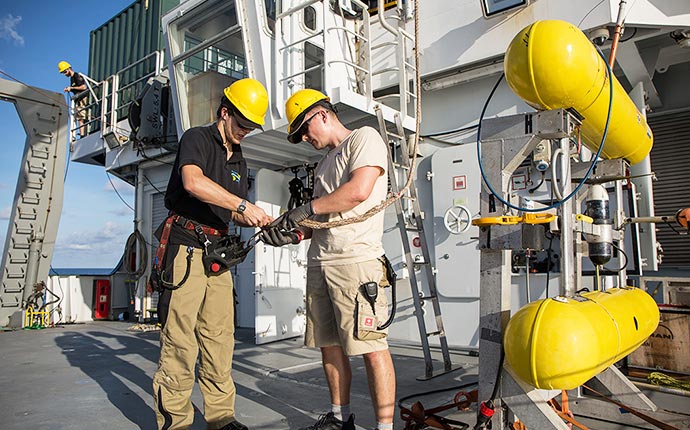
Over-the-Side Deployments
- Deployments over the port side with a 31kN SWL J-Frame
- Two articulating knuckle boom cranes provide at least 2 metric ton weight lifting coverage across all the Aft Deck (model HIAB Sea Crane 301-4 and HIAB Sea Crane 121-2)
- Deployments of equipment and recovery of samples and instruments with elevator / lander platforms
- Schmidt Ocean Institute owns and operates one elevator / lander platform depth rated to 11,000 meters
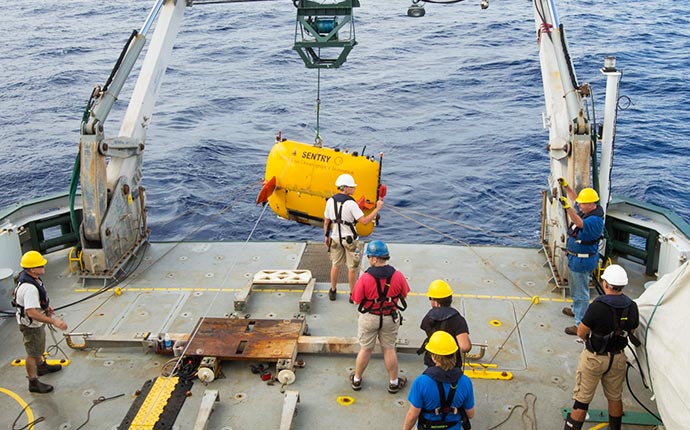
Aft Working Deck Operations
- 500 kW of unregulated electrical power from a dedicated 3-phase, 50 Hz, 395 VAC generator
- Additional equipment mounted to the Aft Deck and Staging Bay deck surfaces using a 2 foot x 2 foot bolt pattern
- North American electrical power outlets (100 kVA total)
- European electrical outlets (unregulated plus up to 25 kVA clean power)
- Hot and cold fresh water outlets
- Incubator sea water outlets
- Compressed air outlets
CTD/Hydro Winch Operations
- 10,000 meters of 0.322” EM coax wire or 9,000 meters 3/8” 3×19 mechanical trawl wire
- Flag block that allows routing the cable to either J-Frame or A-Frame
- Deployments over the stern with a 88kN SWL A-Frame using the embedded single drum MacArtney MASH CTD Oceanographic Winch (Type 10000/8,2-31-RA)* or add-on mission-specific winches
- MacArtney MASH CTD Oceanographic Winch has a 31kN max pull at the top layer and 53kN max pull at the bottom layer
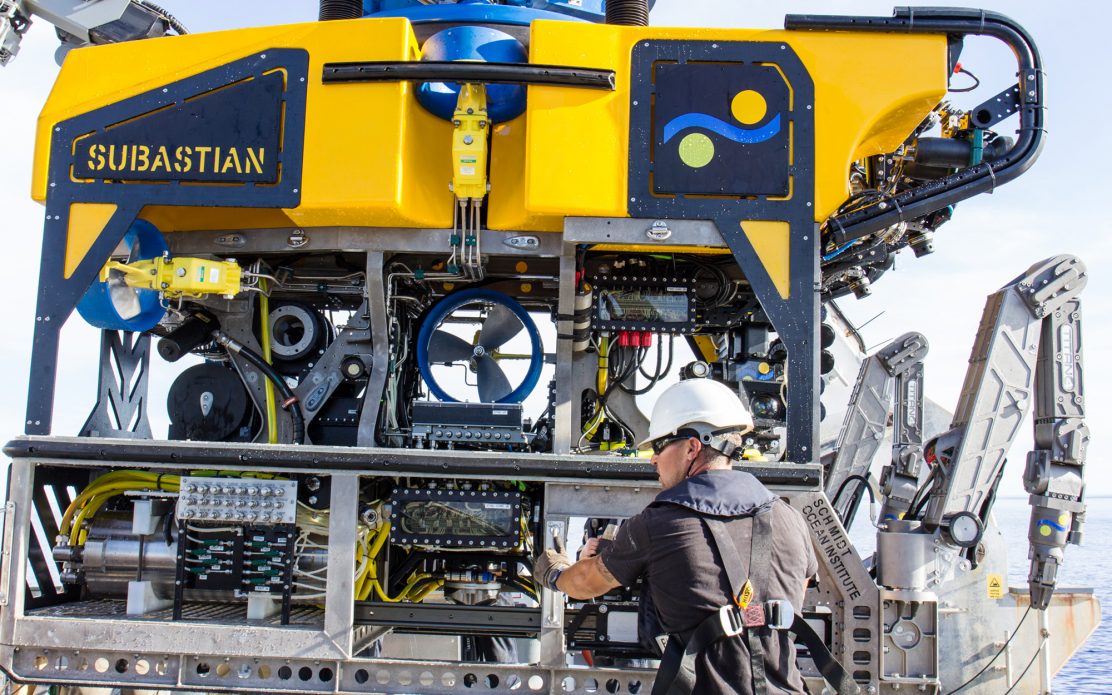
ROV SuBastian (4500m ROV)
Our underwater robotic research program includes the design and development of a 4500m robotic vehicles with research capabilities for use on research vessel Falkor. The ROV is outfitted with a suite of sensors and scientific equipment to support scientific data and sample collection, as well as interactive research, experimentation, and technology development.
Full Specifications
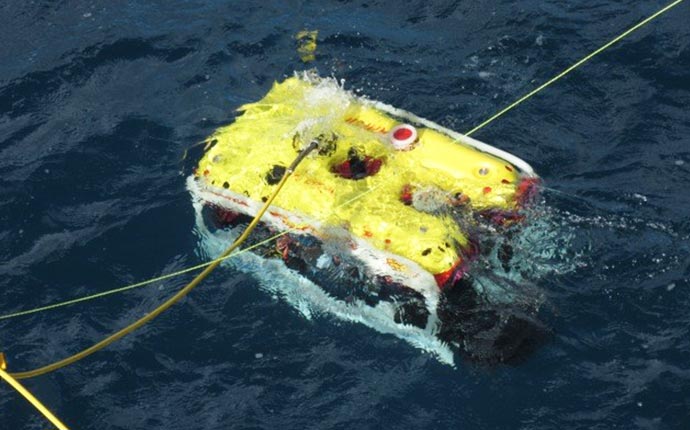
Deployments of Light Packages, Profilers and ROV (SAAB Sea Eye Falcon)
- Starboard Launching Bay on the Main Deck
- 17.7 square meter open deck space
- Adjacent articulating knuckle boom crane (model HIAB 301-4) on the Winch Deck over the Starboard Launching Bay
- CTD is launched from here with a dedicated LARS
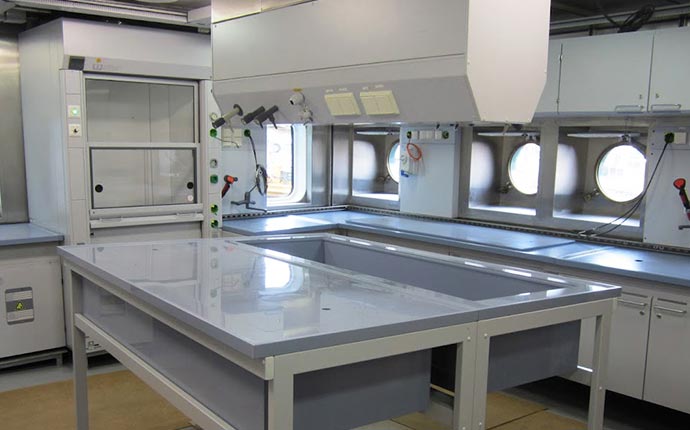
Wet Laboratory Work
32 square meter Wet Lab on the Main Deck equipped with:
- -80°C, -30°C, and +4°C freezer
- Flammable, acid/base hazardous materials locker
- Flammable gas piping, compressed air outlets, fume hood
- Freshwater taps (hot and cold), incubated and uncontaminated saltwater
- North American electrical power outlets (all clean power, up to 100 kVA total)
- 120 VAC 60 Hz
- 208 VAC 60 Hz
- European electrical power outlets (unregulated plus up to 25 kVA clean power)
- 240 VAC 50 Hz 230V
- 400 VAC 50 Hz
- Customizable screen with a variety of data feeds
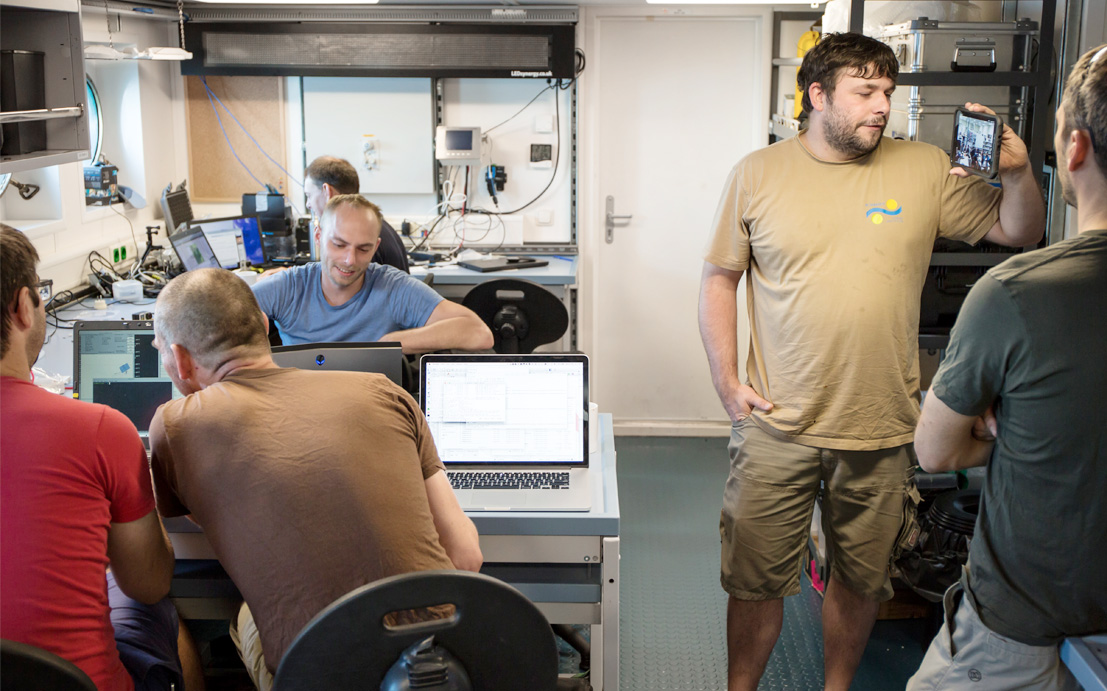
Dry Laboratory Work
Dry Lab area on the Main Deck equipped with:
- 28 square meter Science Control Room for sonar and ROV operations
- 26 square meter Lab / Office Space
- Compressed air outlets
- Variety of work stations and computer racks including wireless scan/copy printer, plotter for maps
- American, European, and Ethernet outlets, 208V, 60 Hz, 20A; 395V, 50 Hz, 32A; 480V, 60 Hz, 50A
- Customizable screen with a variety of data feeds
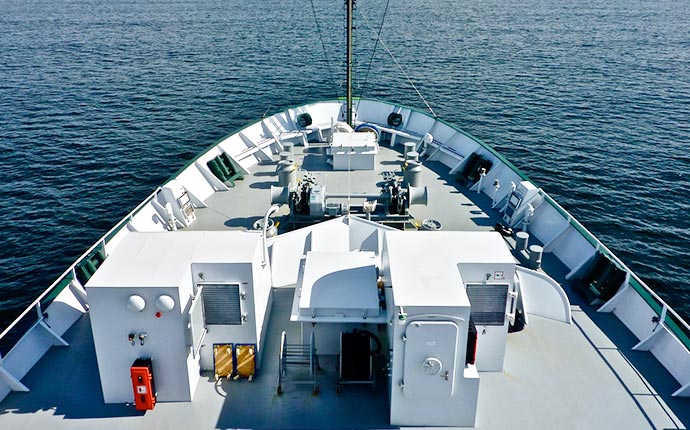
Dynamic Positioning
- Able to maintain position over a given location (some limitations).
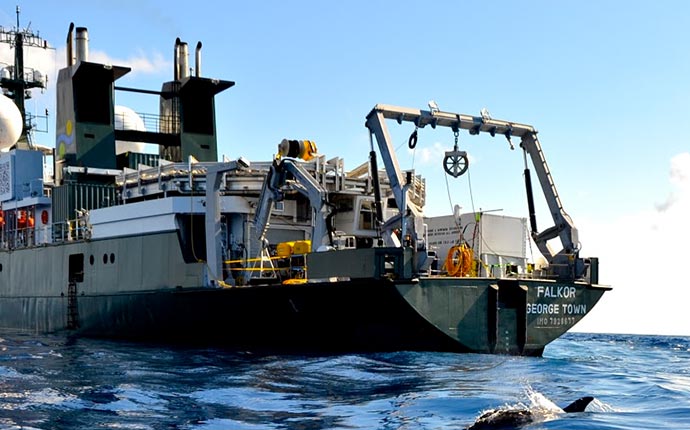
Weather Protected Instrument Staging Bay
- Located on the main deck and is accessible from the back deck via an oversize roll-up door.
- Climate controlled
- North American electrical power available (110v, 1~, 60Hz)
- European electrical power available (220v, 1~, 50Hz)
- Compressed air available
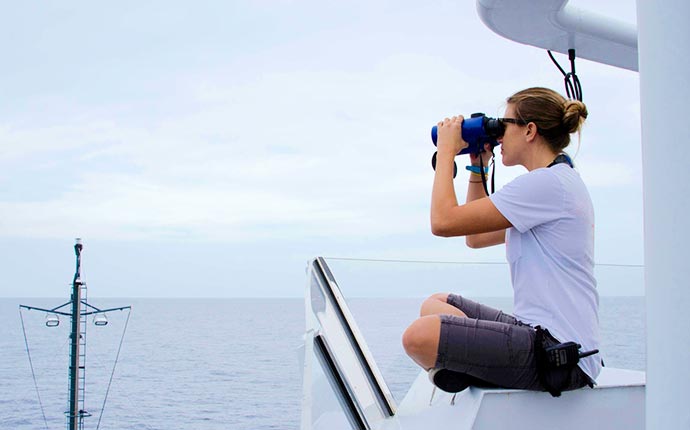
Mammal and Bird Observation
- Open air Observation Deck above Falkor’s Bridge.
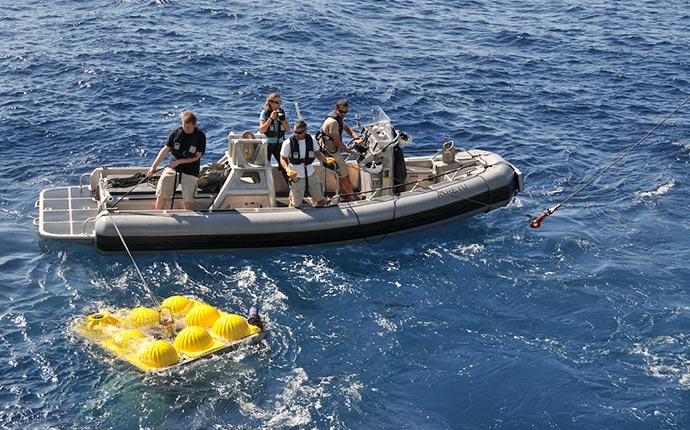
Workboat Operations
- 6.3 meter aluminum hull 350 HP inboard motor jet-drive SAFE Boats workboat supported by a dedicated heave compensating launch davit.
- 4.6 meter inflatable 60 HP outboard motor Zodiac workboat
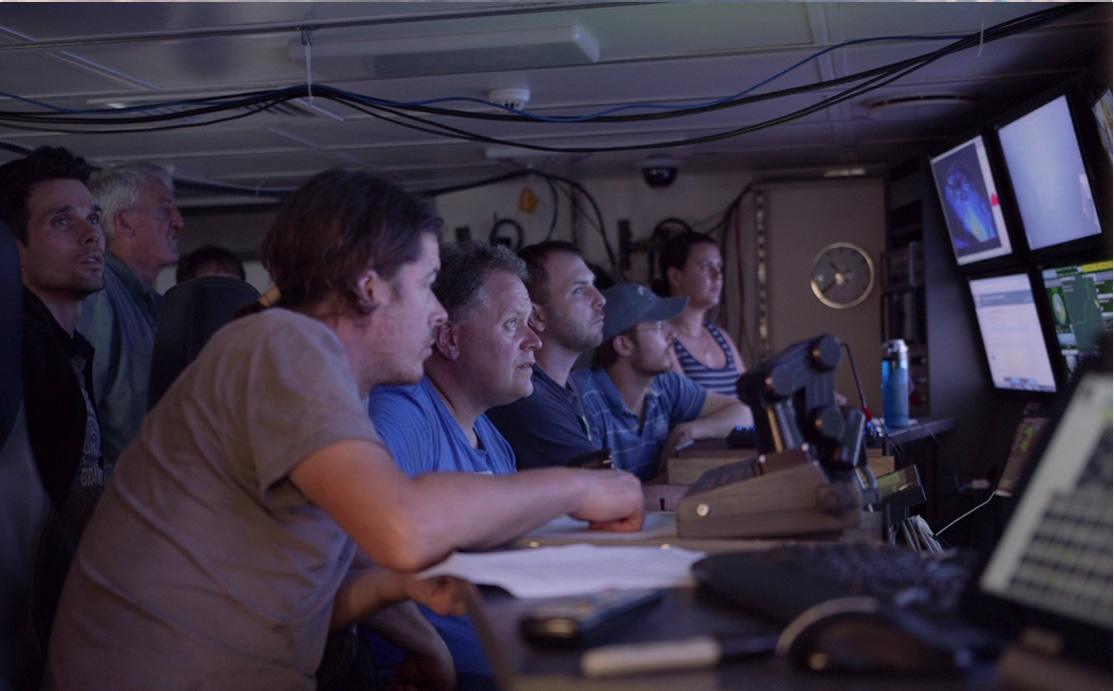
Control Room
- Used for ROV/AUV control, electronic instrumentation interaction, sonar control and sea bottom mapping
- Primary work area has four captain’s chairs with over 20 monitors that can be custom configured to control one or more systems at a time
- Two additional desks provide work space for scientists with available monitors and/or act as a multibeam editing workstation
- Adjacent free rack space in the dry lab allows science parties to bring their own computers and equipment and integrate it with the control room resources
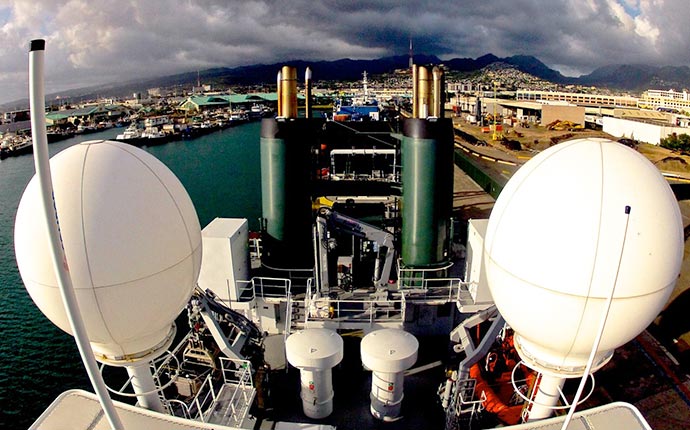
Outreach and Operations Requiring Continuous Global Internet Access
Internet Specifications:
- VSAT System, dual tracking antennas
- Seatel 97 series
- C Band
Video Router & Streaming Specifications:
- 64 port HD digital matrix system enabling video routing from 64 input sources to 64 outputs
- Internal streaming to Android and iOS devices
- Modulation over Advanced Television Systems Committee (ATSC) to any TV monitor or projector on Falkor
- Customizable layout for all outputs depending on cruise objectives
- Two encoders for live streaming from any of the video router sources
- Conference / Library Room to broadcast presentation and support for video conference calls
Science Systems
Falkor supports the following science systems:
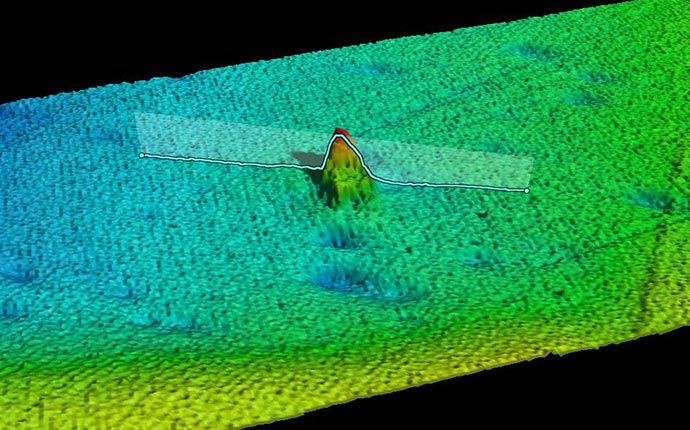
Scientific Echosounders
- 8000 meter deep water multi-beam echo sounder – Kongsberg EM 302 1×1 degree
- 2000 meter shallow water multi-beam echo sounder – Kongsberg EM 710 0.5×1
- Falkor Multibeam Echosounder System Review is available for review at the UNOLS Multibeam Advisory Committee website
- Single beam echosounder – Kongsberg EA 600, 12/38/120/200 kHz
- Fishery research echosounder – Simrad EK60, 18/38/70/120/200/710 kHz
- Fishery detection sonar – Simrad SH90, high definition omnidirectional, 114 kHz
- Sub-bottom profiling – Knudsen CHIRP 3260, 12kHz
- Water current velocity – -Teledyne Acoustic Doppler Current Profiler Ocean Surveyor, 75 kHz
- Water current velocity -Teledyne Acoustic Doppler Current Profiler Workhorse Mariner , 300 kHz
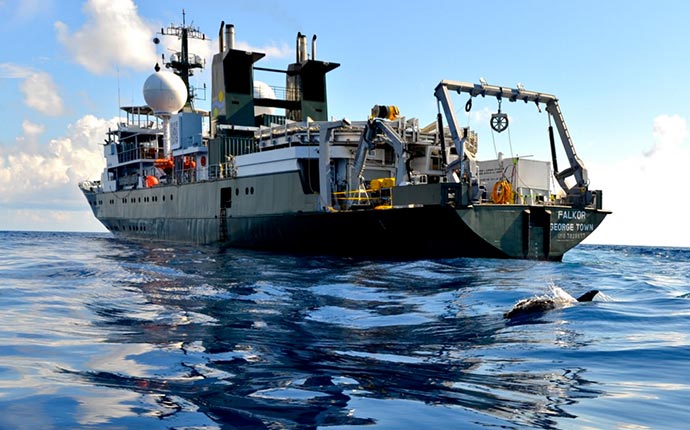
Subsea Acoustic Positioning System
- Sonardyne Ranger 2 Ultra-Short Base Line (USBL) acoustic positioning system
- Transceiver unit fits on a deployable through-hull pole via a 340mm opening gate valve
- HPT 5000 transceiver with 5000m depth rating
- Four WSM6 beacons with 4000m depth rating
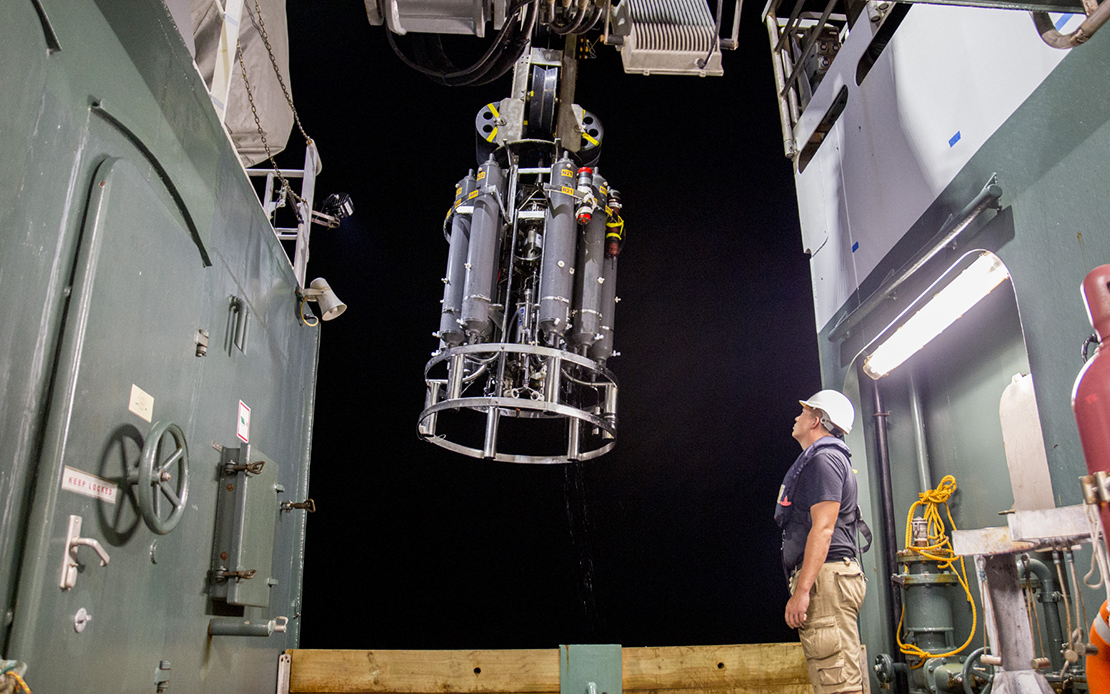
CTD and Water Sampling System Rosette
- 24 position SBE32 Carousel Water Sampler with 12-liter Niskin Bottles
- CTD SBE 9 Plus CTD with dual C-T sensors
- Benthos Altimeter PSA-916
- Biospherical QSP-2350L PAR
- SBE 43 Dissolved Oxygen
- Wet Labs C-Star Transmissometer
- Wet Labs ECO-FLNTU
- Valeport Altimeter
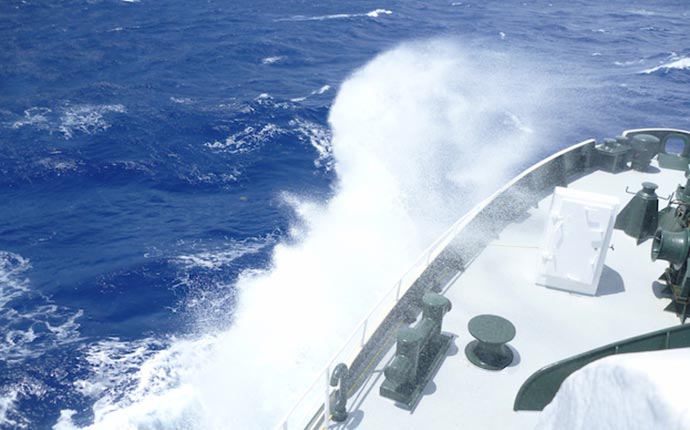
Underway Water Characterization
- Flow-through thermosalinograph (model SBE45)
- Oceanographic thermometer mounted at seawater intake (model SBE 38)
- Fluorometer measuring fluorescence from chlorophyll-a (model WET Labs ECO-FLS)
- Sound velocity sensor (model Valeport miniSVS)
- AFT-pH pH sensor (Based on Sunburst Sensors’ winning design of Wendy Schmidt Ocean Health XPRIZE)
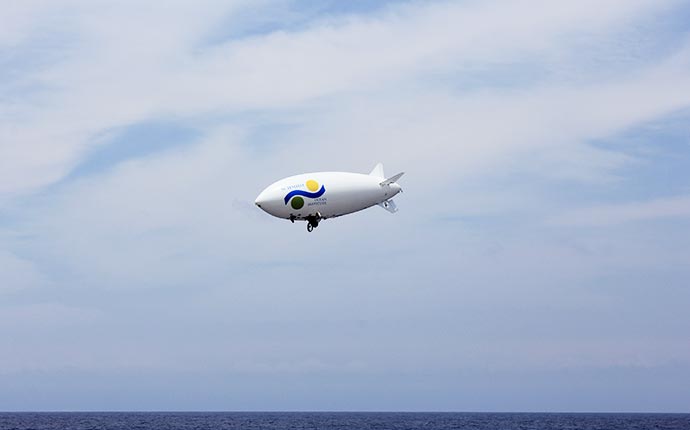
Aerial Observation Platform
- Blimp radio controlled, 4m length, 1000m range, 20 minute endurance at 20 kts
- Quad H20, takeoff weight 1.6kg; max additional payload 800g; 10 -15 min flight time
- Video downlink, video monitoring equipment
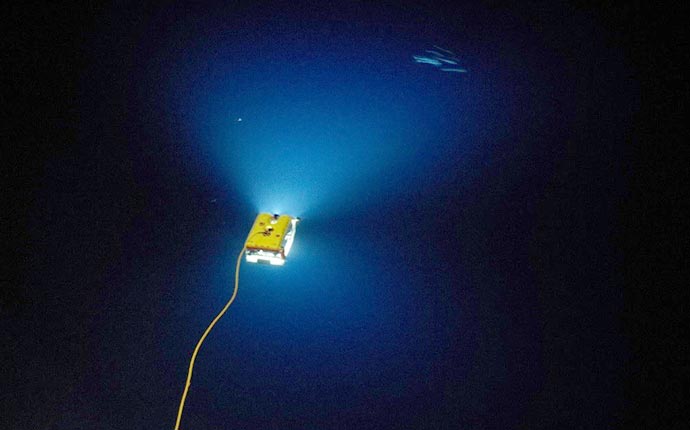
Remotely Operated Vehicle
- SAAB SeaEye Falcon, 300m depth rating
- High definition camera
- Single 5-function hydraulic manipulator arm
- Hand winch spooled with 600m of protected fiber tether
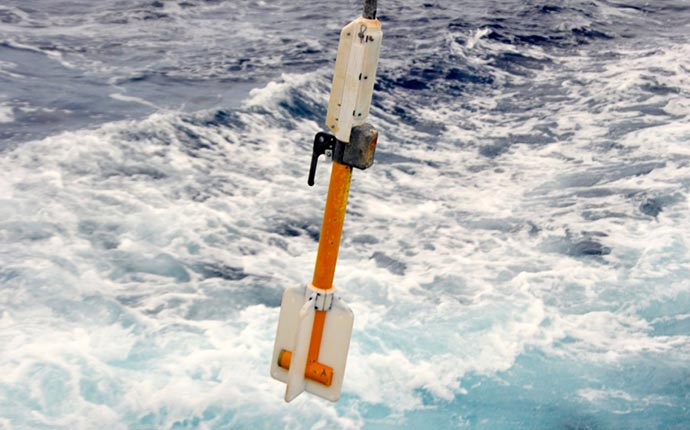
Magnetometer
- Marine Magnetics SeaSPY2 for geo magnetics use
- 300m of umbilical tow cable
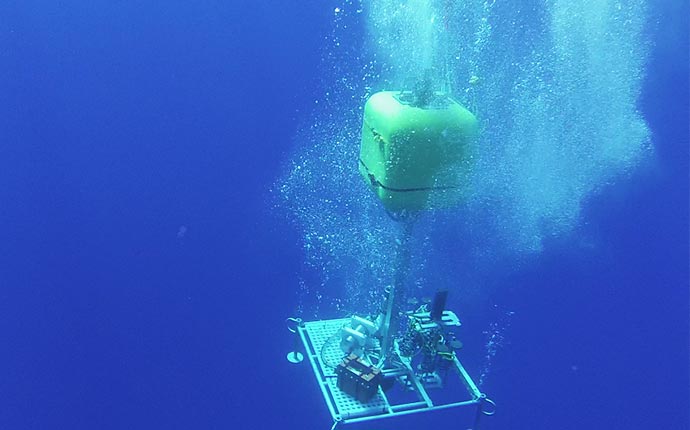
Elevator / Lander Platform
- Platform 11,000m depth rated (built by Woods Hole Oceanographic Institution)
- Stored at shoreside facility
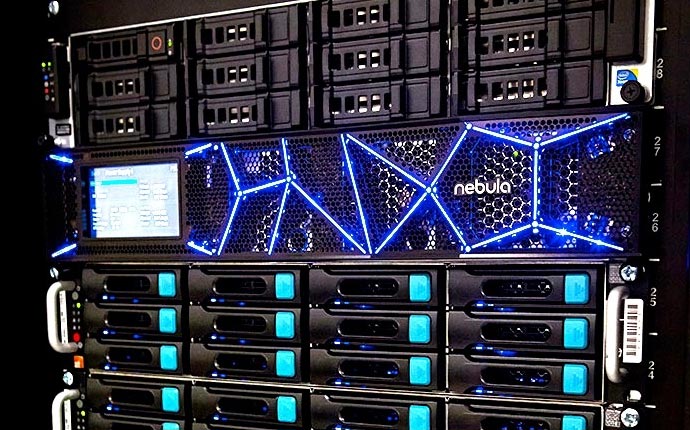
High Performance Cloud Computing System
- Maximum CPU cores: 60
- Maximum cores per virtual machine: 12
- Total RAM: 2.56TB
- Maximum RAM per virtual machine: 512GB
- Data storage:
- Internal: 78TB (redundant, system architecture dependent)
- External NetApp via 10 Gbps LAN: 117TB (redundant)
- Operating Systems: any required
